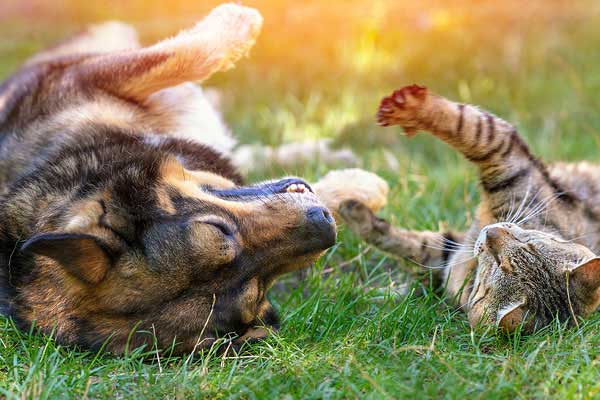Summer pet safety

The checkup
Schedule a wellness checkup with your vet at least once a year and voice any concerns about your pet’s health. Your veterinary office can also refill animal prescriptions, suggest certain flea and tick preventatives and give helpful tips to make sure you and your companion stay safe.
Shade and water. Warmer temperatures mean spending more time outside. Make sure you have a place where your pet can stay cool. A shade tree or a covered patio will provide a reprieve from the harsh sun rays. Also, make sure there’s plenty of clean, fresh water for your pet to drink to avoid dehydration. Remember to keep your pet indoors if weather conditions are extreme.
Food
Do you have a furry friend who also wants to be a professional food taster? Certain foods should not be ingested by your pet, as it can lead to severe digestive issues or death. If you do decide to give your pet a quick summer treat, watch for foods that may contain chocolate, grapes, onions, garlic, chives, cooked bones and the artificial sweetener, xylitol. Consult your vet for further lists or approved treats.
Car rides
Never leave your pet alone in a vehicle. Depending on your state, it could even be illegal. Temperatures in vehicles heat up quickly during summer months which can lead to heat stroke. If you decide to take your furry friend with you, explore places where you can take your pet inside. Most businesses have pet policies, so ask a store clerk or business owner.
Doggy paddle
Pool and water safety are things you’ll want to practice. Not every dog is a competent swimmer. If you have a pool, teach your dog how to safely find the pools stairs in order to exit. Look into getting a dog life vest, which can help even the most competent swimmers stay safe and avoid drowning if they can’t exit the water. If need be, see about dog swimming lessons.
Take a walk
Be mindful of the time of day when you walk your pet. Walk early in the morning or late in the evening. If walking close to dawn or dusk, make sure you and your companion are visible to others. Wear reflective gear yourself, and you can purchase reflective or light up collars and leashes for your companion to improve their visibility, as well. Also, before walking your pet, check for hot asphalt and concrete. If asphalt or concreate is too hot for your hand, it’s too hot for your pet’s paws.
Know the signs
Watch for the signs of heat stroke: heavy panting, difficulty breathing, drooling, vomiting, rapid heart rate, red or pale gums, elevated body temperature, weakness and collapsing. If you notice these signs, call your vet immediately or take your pet to an emergency pet clinic. Heat stroke can be deadly.
Watch for poisonous substances
With the summer season underway, you may be looking to keep pests like mosquitoes and mice away. Keep insecticides and rodenticides away from your pets, as they may be drawn to the smell of the product. Also, be mindful of outdoor plants that may be toxic to your pets. Consult a local garden center or vet if you are worried about plant toxicity.
Fireworks
Keep your fury friend at home if you’re going to be at an event where there are fireworks. Loud noises can spook your friend, and they can run off. Instead of taking your pet, keep them in a quiet place at home or board them at a pet boarding facility. If you are still concerned about your pet running off, install a pet camera in your home or invest in a collar with a GPS tracker.
By being prepared, you can relax knowing your pet is safe during the summer months. Enjoy summer with your companion!